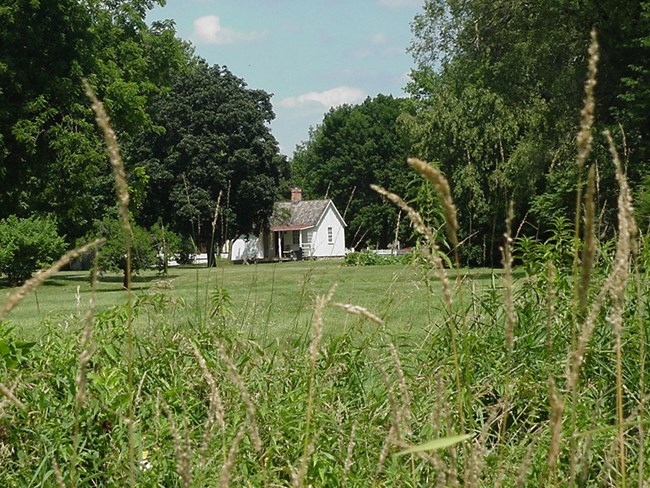
NPS
The park includes 86 acres of reconstructed tallgrass prairie, several small treed woodlots, scrub and treed or scrub riparian areas, and a 40-acre abandoned row-crop farm. The reconstructed tallgrass prairie was originally seeded in the spring of 1971 with five species of native grasses: big bluestem (Andropogon gerardii), switchgrass, Indian grass (Sorghastrum nutans), little bluestem (Schizachyrium scoparium), and sideoats grama (Bouteloua curtipendula). Park managers added forbs in 1976 and made subsequent additions of forbs and Canada wild rye in 1992 and 1994. In 1997, a small tree planting (approximately 2 acres) was created on the southeast ridge of the prairie. Only a few oaks remain in this planting. In 2000, the park planted 200 nut trees immediately south and west of the Gravesite and survival is estimated at about 50 trees. Other wooded areas occur within the riparian area and on the edges of the prairie. These are dominated by black walnut, green ash, and hackberry (Celtis occidentalis), and several invasive trees and shrubs.
Natural Resource Updates
Source: NPS DataStore Saved Search 3507 (results presented are a subset). To search for additional information, visit the NPS DataStore.
Source: NPS DataStore Collection 4260 (results presented are a subset). To search for additional information, visit the NPS DataStore.
Check out the links below for other interesting science information about your park:
Air Quality in Parks
Learn about the air quality at your park and how it has changed over time.
NPS Geodiversity Atlas
An interactive map to explore the full variety of natural geologic (rocks, minerals, sediments, fossils, landforms, and physical processes) and soil resources and processes that occur in your park.
NPSpecies
Find out what plants and animals are present in your park or other parks.
Last updated: September 1, 2022
